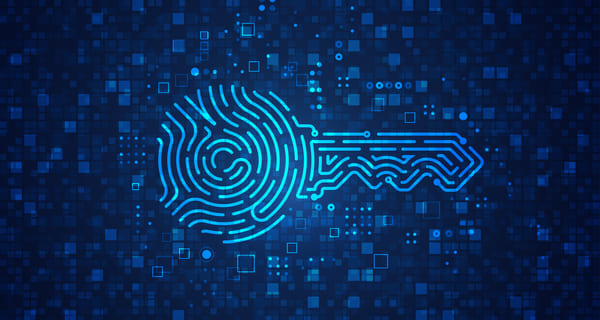Cryptocurrencies are fundamentally different from the banknotes and coins we know. They are not controlled by any institutions, and no bank issues them. Due to the different technology, transfers from one wallet to another occur differently compared to electronic banking. In this article, we will answer the question of how Bitcoin works. We will also explain how other cryptocurrency networks work, of which – we must admit – there is no shortage on the market.
- Cryptocurrencies vs online banking transactions – important differences
- How cryptocurrencies work: decentralization and independence
- Cryptography – the basis of cryptocurrencies
- How cryptocurrencies work: blockchain technology
- What are private keys?
- How cryptocurrencies work: mining
- What is an electronic wallet used for?
- Are Bitcoins real money?
- SUMMARY
Cryptocurrencies vs online banking transactions – important differences
The first and most obvious aspect that distinguishes cryptocurrencies from traditional money is their Completely virtual form. Someone might say, “but after all, everyone who uses online banking also uses virtual money. Online transfers do not require cash. So in the case of cryptocurrencies, aren’t we dealing with an upgraded version of traditional money?”.
Such reasoning contains a serious error: the funds we transfer using a mobile app or through an online service are just representations of physical bills and coins. They can be converted into actual cash at any bank branch. Cryptocurrencies, on the other hand, do not represent anything; they are money in themselves. They cannot be exchanged for any physical object (except by transaction). Immateriality is a necessary feature of any cryptocurrency. So, how do cryptocurrencies work? We explain below.
How cryptocurrencies work: decentralization and independence
Another aspect of cryptocurrencies that should be considered is their decentralized nature. Such networks are characterized by the ability to self-regulate: they do not need any entity that would manage them. No institution mediates between the users performing the transactions – as in traditional financial circulation, where a bank plays intermediary roles. It would seem that the lack of institutional supervision is not conducive to maintaining security.
Meanwhile, systems such as Bitcoin or Ethereum turn out to be much safer than traditional online banking. They also provide Complete independence from any external entities. It’s worth remembering that banks are staffed by people just like us, and all the technological conveniences that minimize the risk of posting mistakes don’t completely rule them out.
In cryptocurrency networks, a mistake is something impossible without the intentional intervention of a hacker. They rely on blockchain technology so that all users must approve every transaction. Of course, this does not rely on manual approval – if it did, the network could not function. Computers do all the necessary calculations.
Imagine that you live in a village with ten inhabitants. Everyone has something the others don’t have, so you trade with each other. You agree that you will meticulously record every transaction, as well as every change in the wealth of each inhabitant. With such a system, it is impossible to make a mistake: if one person has given another a coin and it has been recorded in the accounts, he cannot give that same coin to someone else (unless it comes back to him through further transactions). In simple terms, this is how cryptocurrencies work, but on a larger scale and with the use of Advanced computer technology.
Cryptography – the basis of cryptocurrencies
The first part of the word cryptocurrency indicates the connection between digital money and cryptography – a field of knowledge that includes Techniques for encrypting information. If the entire code of any crypto network, such as Bitcoin, were transparent – Internet users would know other people’s private keys and could easily manage their funds. To prevent this, much of the code remains encrypted – and in such a way that it takes machines with powerful computing power to decrypt the code and validate subsequent transactions.
In this way, the network remains secure, and users do not know their private keys, which consist of random digits. Each user has their own unique private key. It represents a kind of digital signature that can be used to approve cryptocurrency transfers to other wallets. The private key needs to be generated using a special program.
How cryptocurrencies work: blockchain technology
The term blockchain can be defined as a database containing all transactions made on the network. Importantly, no transaction can be deleted or modified (unlike in a traditional financial system where a bank has complete freedom to modify its ledgers). Individual transactions are arranged into larger wholes, which are called blocks.
Each new block consists of a strictly defined number of transactions. Blocks follow each other according to a time criterion: the earlier ones are a reference for the later ones. Together, they form a chain within which no stored information is lost. This is why it is so often emphasized that cryptocurrencies provide a Higher level of security from a technological point of view than electronic banking.
The essence of blockchain technology is to keep a digital ledger in circulation. This ledger resides on each user’s disk – in the form of a copy. The number of copies equals the number of users. Cryptocurrencies are based on a peer-to-peer network that does not require the intermediation of central computers or management systems. Any computer connected to the network can participate in the process of Authentication of subsequent transactions.
On the one hand, this ledger is, of course, protected against unauthorized access. On the other hand, anyone can freely browse it and, if necessary, independently verify the Authenticity of the transfers that have taken place. We must admit that this is huge progress concerning the traditional financial system.
What are private keys?
To explain how cryptocurrencies work, it is necessary to expand a little on the topic of private keys. As we have already mentioned – these act as signatures with which users confirm the transactions they make. They contain mathematical proof that the person who transfers the funds actually has them.
Moreover, the private key prevents possible modifications of the transaction by third parties. The transaction information is continually Duplicated and stored with other network users shortly after the funds are transferred. Whether it’s Bitcoin (BTC), Litecoin (LTC), or any other digital currency, this is how any system based on blockchain technology functions. Transactions are confirmed through a process called mining.

Complementary to the private key is the public key, which serves as an address by which a user can be identified. The private key belongs to Confidential information, which should not be revealed to anyone. The public key, on the other hand, can and should be shared as – let’s repeat – it is the address that allows other users to locate you.
How cryptocurrencies work: mining
Each new transaction must receive an acknowledgment before it is included in the blockchain. Not from one computer or two. A significant portion of the network is involved in this process. This ensures users that all transfers are Authentic, and that no unauthorized person messes up the system. This solution also ensures the chronological arrangement of transactions in the chain and allows different computers to reconcile network status.
Transaction data is arranged in a block constructed based on strict cryptography rules. These prevent the possibility of tampering with previously stored blocks, thus protecting the network from destabilization – if the content of previous blocks could be changed, all subsequent blocks would have to be invalidated.
Mining can be pictorially represented as a lottery based on competition. Individual “miners” (if you’re not familiar with this term, be sure to read our article on mining) compete with each other, so to speak, for incoming transactions to be added to the chain. This ensures that no single person is responsible for the entire process, and no single person controls what gets recorded in a given block. Such a mechanism makes it impossible to undo your own spending. This is how BTC works, as well as other cryptocurrency networks.
Most importantly, once a specific limit is exceeded (21 million Bitcoins in the BTC network), the system will stop issuing more Bitcoins, and miners’ work will be rewarded with commissions for transactions. The limited number of Bitcoin will prevent inflation, which is sometimes the real bane of the traditional financial system. So you can see that Satoshi Nakamoto, the creator of Bitcoin, has considered everything.
The time required to Validate transactions should be as short as possible for the network to work efficiently: more transactions keep coming in and demanding to be included in the block. This means that the cryptocurrency excavators have to work around the clock to ensure that our transfers are Authenticated at the right moment.
You already know how Bitcoin and other similar networks function. It’s time to discuss cryptocurrency wallets.
What is an electronic wallet used for?
An Electronic (cryptocurrency) wallet is where you can store your funds. It is a safer place to store Bitcoins compared to an exchange account. Despite advanced security measures to protect users’ interests, cryptocurrency exchanges sometimes fall prey to hackers. Some go bankrupt. For this reason, it is better not to store Bitcoin or other digital currencies on an exchange account. Especially if you own large amounts.
To protect yourself from the possibility of an unintentional loss of funds, it is worth getting a hardware wallet – this is definitely the safest type of wallet. Other wallets, such as browser-based and mobile wallets, do not provide such a high level of security. No matter how much Bitcoin (or other digital currencies) you have, a hardware wallet will be the most appropriate choice.
Two manufacturers are leading the market: Trezor and Ledger. These brands’ devices are reliable, have Their own operating system, and offer much more than other types of wallets. Anyone who values security is strongly advised to purchase them.
Are Bitcoins real money?
The answer to the above question cannot be conclusive. Considering the dictionary definition of money, according to which it is “a means of payment accepted in exchange for goods and services or releasing from obligations”, both Bitcoins and other Digital assets meet this criterion. Considering the legal point of view, however, you have to admit that cryptocurrencies are not a legislatively sanctioned payment method.
Therefore, your employer could not pay you your salary using Bitcoin (at least currently). He or she has to follow the law, which does not provide for such an option. Similarly, if you owe someone a debt or want to settle a bill, you cannot pay in Bitcoin. You have to use the National currency.
On the other hand, Bitcoin can be exchanged for Any fiat currency: USD, EUR, etc. You won’t pay with it in a store. Still, after exchanging the currency in an exchange office or through a cryptocurrency exchange, you will come into possession of “real money”, accepted by all commercial and service outlets in the country. A few stores accepting Bitcoin payments (not to mention lesser-known cryptocurrencies) have been established, but their number is still growing. Cryptocurrencies are gaining popularity around the world. Currently, there are already several thousand of them.
Digital assets can be compared to shares in a company or, for example, gold. Shares have an undeniable value; gold also has its value. And yet, they are not universally accepted means of payment. Securities lose and gain value; cryptocurrencies do too. In a favourable time, the price of a digital currency can rise overnight, and in a moment of a downturn, it can fall Unpredictably.
SUMMARY
You already know how cryptocurrencies work. You have learned the basic concepts: blockchain, mining, and decentralized peer-to-peer networks. It will now be easier for you to understand why the price of Bitcoin fluctuates so frequently and why the mathematical operations performed by the miners consume so much computing power. If you want to expand your knowledge in this area, we encourage you to read our other articles.

